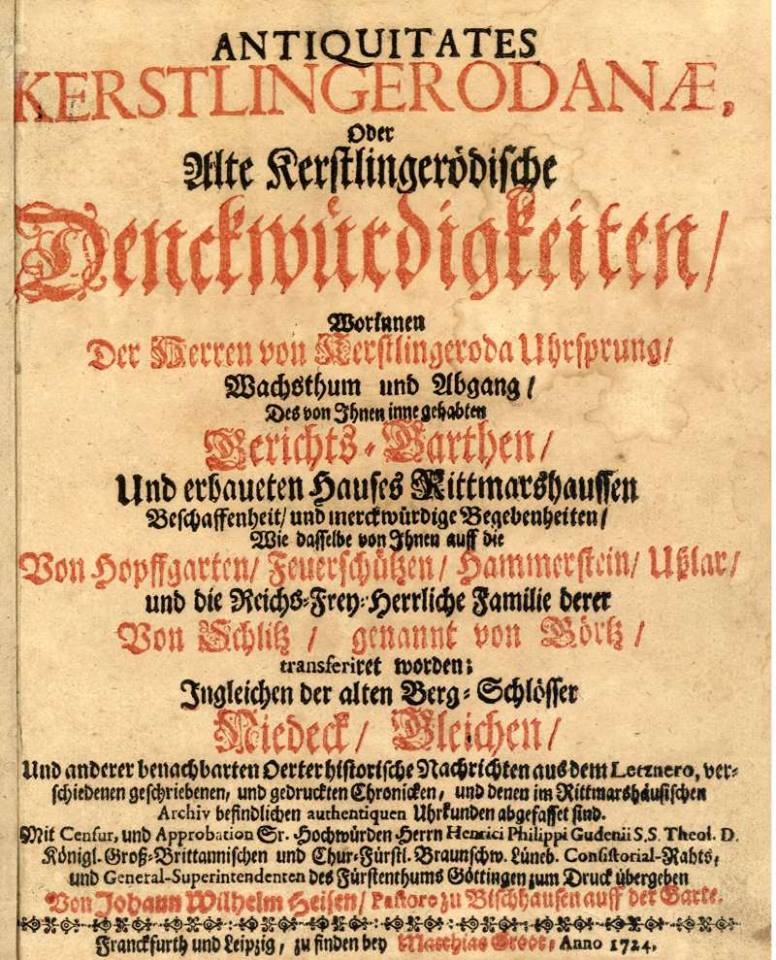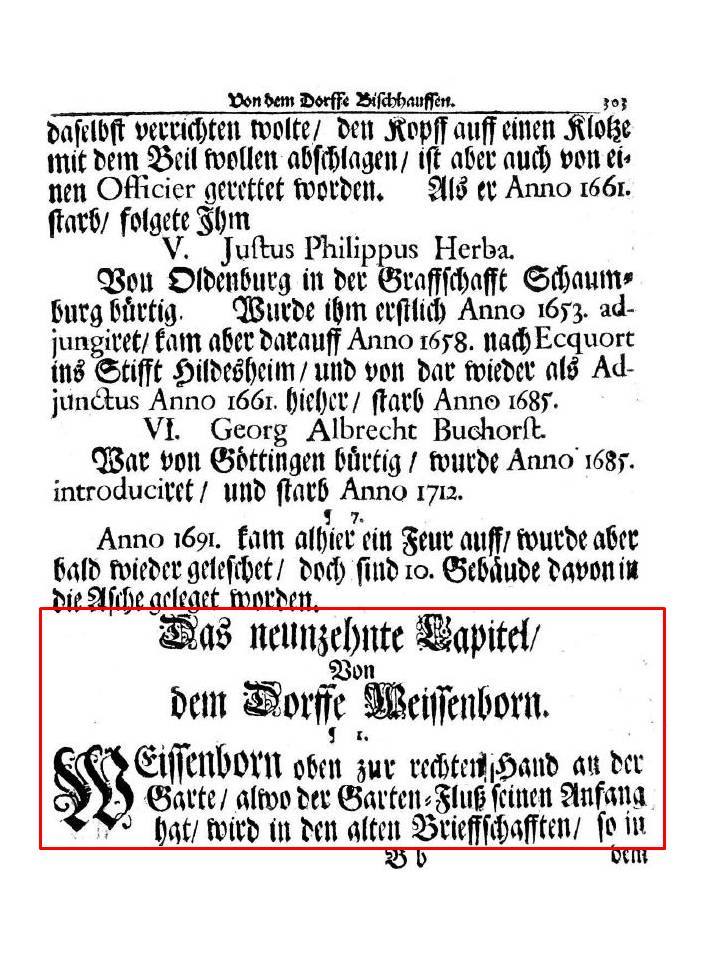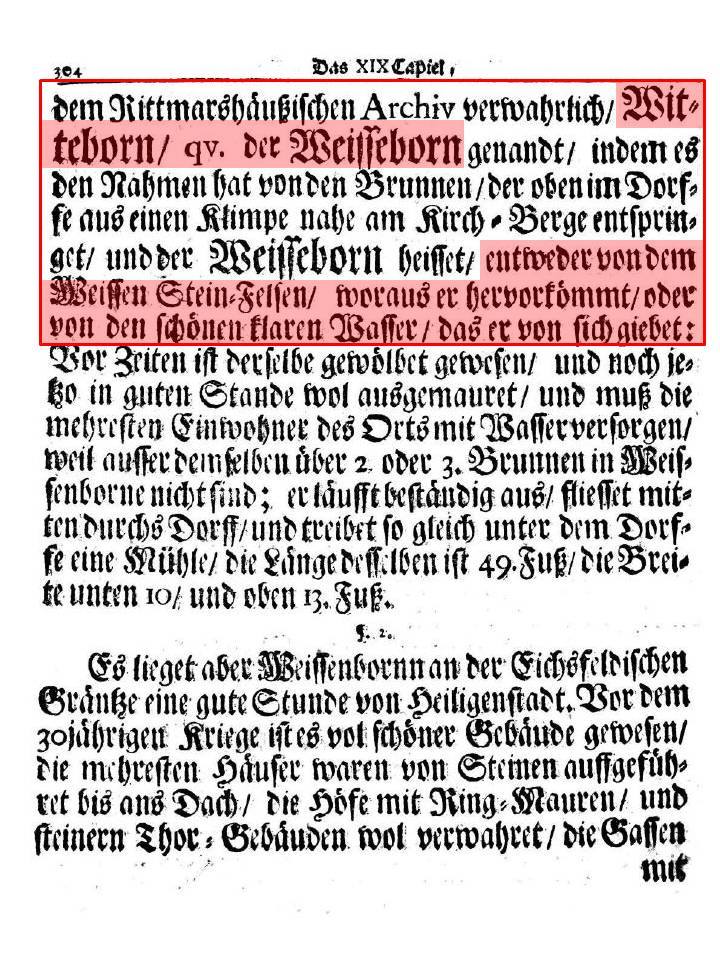The meaning of the name Weis(s)enborn alias Wittenborn
Posted on Facebook on 18 October 2015. I found definite evidence that in the early 18th century the meaning of our family name was common knowledge, at least in central Germany. Chapter 19 of the 1724 travel guide for Kerstlingerode - a village in South-Niedersachsen, near the border with Thüringen - deals with the village Weissenborn at the spring of the stream Garte. The translation of the section in the red rectangles says it all: "Weissenborn up on the right handside of the Garte, where the Garte-stream has its origin, is in the old papers that are kept in the archive of Rittmarshausen called Witteborn or Weisseborn, as it has the name of the spring that wells up at the top of the village from a rock near the Kirch-berg which is named Weisseborn, either for the white stone mass from which it springs forth or for the nice clear water that it produces." I should add that "wit" is the word for white in Dutch, as well as in platt-Deutsch, the version of German spoken in the border area of Germany and the Netherlands. In the 18th century this word was also used in the area north of the border of the "Lautverschiebung" = sound-shift, which ran pretty much through this village Weissenborn. Weiss and Wit are hence all but identical.


